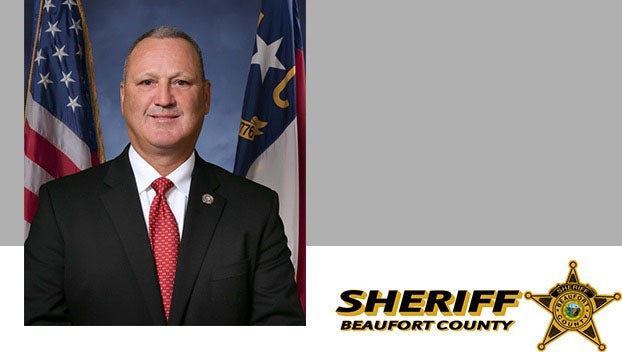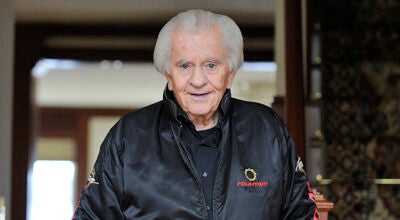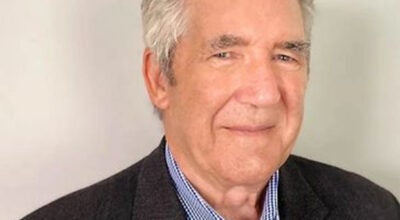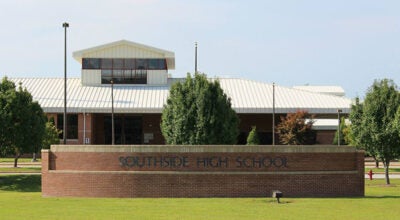Washington native participates in Lost Colony research
Published 7:25 pm Monday, November 24, 2014
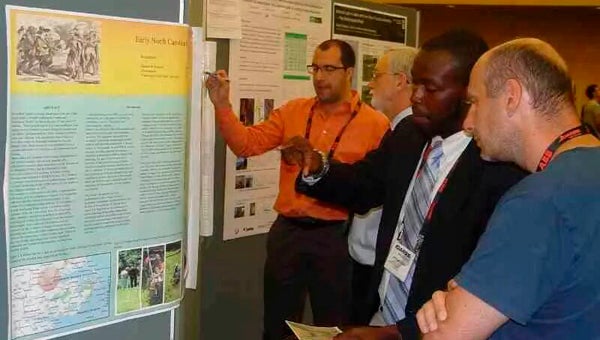
MICHAEL COBB | CONTRIBUTED
PRESENTING RESEARCH: Michael Cobb, a Beaufort County Community College and Elizabeth City State University graduate, participated in research at a site believed to be the Lost Colony. Pictured, Cobb presented his research to fellow researchers around the world at the International Geoscience and Remote Sensing Symposium (IGARSS 2014)/ 35th Canadian Symposium on Remote Sensing (35th CSRS) in Quebec.
A Washington native and Beaufort County Community College graduate recently participated in research that has possibly discovered one of history’s greatest mysteries.
Michael Cobb, a 2011 BCCC graduate, performed underground radar searches of a site in Chowan County where he was part of a team through the Center of Excellence in Remote Sensing and Education Research (CERSER) at Elizabeth City State University, he said. The research, conducted during the summer of 2013 near the Chowan River, unveiled clues leading some, including the National Geographic Society, to believe that 120 English settlers may have ended up there after they left Roanoke Island. Cobb was unable to speak publicly about his participation in the research until now due to additional studies that have been done at the site, he said.
According to a press release, the site on the river has remained undeveloped through the last few centuries and has not been announced publicly. Researchers were drawn to the site by a map drawn in 1585 by John White, an artist and friend of Sir Walter Raleigh, who sponsored the English settlement on Roanoke Island. According to a report in the Daily Mail of London, tests found a hidden section of the map, drawn in a style of invisible ink and covered with paper, which provided a hint at the possible location of a fort, the release said.
Using a device that resembles a baby carriage, Cobb, and his fellow researchers, spent a day at the site covering the terrain in a grid-like pattern searching for abnormalities beneath the surface much like sonar does when searching for objects underwater, he said.
“We did a survey of two different areas, and we used it to see if there were any kind of subsurface features,” Cobb said. “The GPR (ground-penetrating radar) takes high frequency and low impulse waves and penetrate in the soil, and if there is anything, it bounces back.”
The researchers believe the difference in surface structure on the site could indicate the creation of ditches that are different from those created by people native to the region. The location of the colonial ground patterns in the modern images is the same as White’s hidden fort on the 1585 map. In addition, the research team discovered shards of colonial ceramics as well as some small implements and shards of native pottery at the site, the release said.
Accepted into Malcolm LeCompte’s research program as an intern, Cobb not only worked on the site, but also helped in the computer analysis of the findings. LeCompte is a research associate at ECSU and came up with the idea to use GPR alongside White’s map to search for the fort, according to the release.
Cobb said, in July, he participated in the International Geoscience and Remote Sensing Symposium (IGARSS 2014)/ 35th Canadian Symposium on Remote Sensing (35th CSRS) in Quebec where he presented his findings. At the Symposium, researchers from all over the world viewed Cobb’s work and were fascinated by the findings, he said.
“When I went to Canada, I was surprised to see how many people were interested in my research,” Cobb said. “History was never my favorite subject, but I found you can intertwine science with history. Going in, I was focused on analytical research and learning the GPR. This (research) has significance throughout the world. Learning that this mystery can be solved means a great deal to me. We didn’t really expect anything happening from it, but we were very surprised with what we saw.”
Cobb, who graduated from ECSU in May with a bachelor’s degree in chemistry, has been accepted into the master’s degree program at North Carolina Agricultural and Technical State University and will begin his studies in January in pursuit of a master’s in chemistry with a concentration in bio-analytical chemistry. While at BCCC, Cobb served as vice president and president of the Student Government Association and was a member of BCCC’s Minority Male Mentoring group. He volunteers his time with the Beaufort County Police Activities League, the Special Olympics and the Beaufort County Alzheimer’s Education Fair and Walk.


